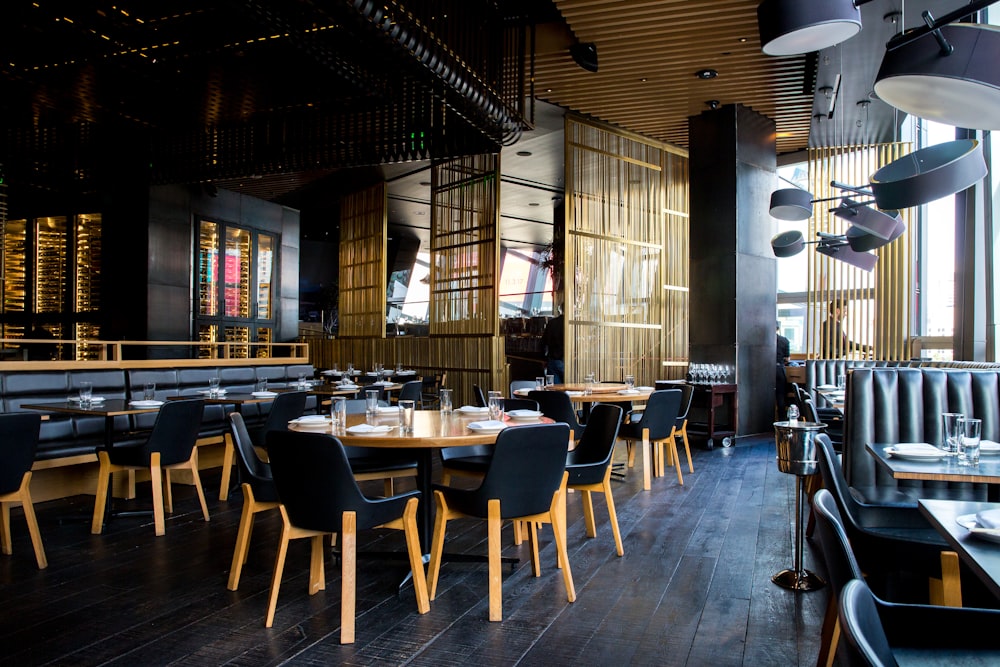
Thai cuisine is renowned worldwide for its complex flavors, aromatic herbs, and perfect balance of sweet, sour, salty, and spicy elements. For visitors to Thailand or those dating someone from this culinary-rich culture, understanding and appreciating Thai food is an essential part of the cultural experience.
This guide will introduce you to the most important Thai dishes every visitor should try, explain key ingredients in Thai cooking, and provide cultural context for dining in Thailand.
Understanding Thai Food Philosophy
Before diving into specific dishes, it's helpful to understand the fundamental principles that make Thai cuisine distinctive:
- Balance of flavors - Thai dishes aim to harmonize at least two of the four fundamental taste elements: sweet, sour, salty, and spicy
- Fresh ingredients - Many Thai dishes incorporate fresh herbs and vegetables picked the same day
- Aromatic components - Lemongrass, galangal, Thai basil, and kaffir lime leaves create the signature fragrances of Thai cuisine
- Regional variations - Thailand's cuisine differs significantly across regions (Northern, Northeastern, Central, and Southern)
- Social dining - Thai meals typically feature multiple shared dishes eaten with rice
Unlike Western meals with separate courses, traditional Thai dining involves serving all dishes simultaneously, allowing diners to sample a variety of flavors throughout the meal.
Essential Thai Curry Dishes
Thai curries (kaeng) are among the country's most famous culinary exports, each with a distinctive flavor profile:
Green Curry (Kaeng Khiao Wan)
Often considered the spiciest of Thai curries, green curry derives its color from fresh green chilies. The curry paste typically includes:
- Green chilies
- Lemongrass
- Galangal
- Shallots
- Garlic
- Kaffir lime leaves
- Coriander root
This aromatic curry features coconut milk as its base and commonly includes Thai eggplant, bamboo shoots, and your choice of protein (chicken, beef, or fish). The sweetness of the coconut milk beautifully balances the heat of the chilies.
Red Curry (Kaeng Phet)
Red curry uses dried red chilies in its paste, creating a vibrant color and rich flavor that's typically less spicy than green curry. Common ingredients include:
- Dried red chilies
- Garlic
- Shallots
- Galangal
- Lemongrass
- Shrimp paste
Popular variants include "Panang curry" (thicker and sweeter with peanuts) and "duck red curry" with pineapple and cherry tomatoes.
Yellow Curry (Kaeng Kari)
Thai yellow curry has Indian influences and gets its color from turmeric. Milder than both red and green varieties, yellow curry typically includes:
- Turmeric
- Cumin
- Coriander seeds
- Fenugreek
- Lemongrass
- Galangal
This curry often features potatoes and onions, making it somewhat similar to Indian curries but with distinctive Thai elements.
Massaman Curry (Kaeng Massaman)
With Persian and Malaysian influences, massaman curry is uniquely sweet and mild. CNN once named it the world's most delicious food. Key ingredients include:
- Peanuts
- Potatoes
- Bay leaves
- Cardamom
- Cinnamon
- Star anise
Typically made with beef (though chicken is also common), massaman curry has a thick consistency and complex flavor that distinguishes it from other Thai curries.
Famous Thai Noodle Dishes
Noodle dishes are an essential part of Thai cuisine, often served as quick street food meals or comfort food:
Pad Thai
Perhaps Thailand's most internationally recognized dish, pad Thai features stir-fried rice noodles with:
- Eggs
- Tofu
- Bean sprouts
- Green onions
- Crushed peanuts
- Lime wedges
- Optional protein (often shrimp or chicken)
The sauce blends fish sauce, tamarind paste, and palm sugar, creating the dish's signature sweet-savory profile. Traditionally, diners customize the flavor by adding chili flakes, fish sauce, sugar, or lime juice to taste.
Drunken Noodles (Pad Kee Mao)
Despite the name, this dish contains no alcohol. The wide rice noodles are stir-fried with:
- Holy basil (not the same as Italian or even Thai basil)
- Chilies
- Garlic
- Soy sauce
- Fish sauce
- Various vegetables
Intentionally spicy, this dish got its name either because it's supposedly good for hangovers or because it's so spicy it makes you feel drunk!
Boat Noodles (Kuay Teow Reua)
This intensely flavored noodle soup was traditionally sold from boats in Bangkok's canals. Its distinctive feature is a dark, rich broth made with:
- Pork or beef blood (giving it the characteristic dark color)
- Star anise
- Cinnamon
- Soy sauce
- Bean sprouts
- Water morning glory
Typically served in small bowls, boat noodles are an acquired taste for many visitors but beloved by Thais.
Cultural Note
In Thailand, noodle dishes are often considered "aharn jaan diew" (single-plate food) and may be eaten as a quick lunch rather than as part of a shared family dinner. Thais typically use both fork and spoon for rice dishes but switch to chopsticks for noodles - a practice adopted from Chinese culinary influence.
Essential Thai Salads
Thai salads (yam) differ significantly from Western concepts of salad, featuring bold flavors and often serving as a main dish:
Green Papaya Salad (Som Tam)
Originating from Northeastern Thailand (Isaan), som tam is now popular throughout the country. This spicy, tangy salad combines:
- Shredded unripe green papaya
- Chili peppers
- Garlic
- Lime juice
- Fish sauce
- Palm sugar
- Cherry tomatoes
- Long beans
- Peanuts
The ingredients are pounded together in a mortar, bruising the papaya to absorb the dressing. Regional variations might include fermented fish sauce (pla ra), salted egg, or pickled blue crab.
Spicy Beef Salad (Yam Neua)
This hearty salad features thinly sliced grilled beef with:
- Shallots
- Mint leaves
- Coriander
- Lime juice
- Fish sauce
- Toasted rice powder
- Chili flakes
The contrast between the savory beef and the fresh herbs creates a refreshing yet satisfying dish.
Glass Noodle Salad (Yam Woon Sen)
This tangy, spicy salad uses clear mung bean noodles combined with:
- Minced pork or seafood
- Shrimp
- Sliced onions
- Celery
- Tomatoes
- Chinese mushrooms
- Lime juice-based dressing
The dressing typically balances fish sauce, lime juice, sugar, and chilies for a perfect harmony of flavors.
Iconic Thai Soups
Thai soups are uniquely flavorful and often served alongside other dishes rather than as a starter:
Tom Yum Goong
Perhaps Thailand's most famous soup, tom yum goong combines hot and sour flavors with aromatic herbs:
- Lemongrass
- Galangal
- Kaffir lime leaves
- Thai chilies
- Lime juice
- Fish sauce
- Shrimp (goong)
- Mushrooms
The soup can be clear (nam sai) or creamy with the addition of coconut milk or evaporated milk (nam khon). Either way, it delivers an intensely aromatic, spicy experience.
Tom Kha Gai
This coconut chicken soup offers a milder alternative to tom yum, with a rich coconut base that balances the spices:
- Coconut milk
- Chicken
- Galangal (the "kha" in the name)
- Lemongrass
- Kaffir lime leaves
- Thai chilies
- Lime juice
The creamy, slightly sweet coconut broth makes this soup more approachable for those sensitive to spice while still delivering complex Thai flavors.
Experience Thai Cuisine with a Local Guide
Want to explore authentic Thai restaurants with someone who knows the best local spots? Our premium membership connects you with Thai partners eager to share their favorite culinary experiences.
Regional Thai Specialties
Thailand's cuisine varies significantly by region, each with distinctive dishes worth seeking out:
Northern Thai (Lanna) Cuisine
The cuisine of Chiang Mai and northern provinces features:
- Khao Soi - Egg noodles in a curry broth with chicken or beef, topped with crispy noodles, shallots, and pickled mustard greens
- Sai Oua - Herb-filled northern Thai sausage with lemongrass, galangal, and kaffir lime leaves
- Nam Prik Ong - A chili dip made with tomatoes and ground pork, served with vegetables and sticky rice
Northern cuisine tends to be milder than central Thai food, often using more herbs and less coconut milk.
Northeastern (Isaan) Cuisine
The cuisine of Thailand's largest region bordering Laos features:
- Larb - A minced meat salad with toasted rice powder, herbs, chilies, and lime (considered Isaan's unofficial national dish)
- Gai Yang - Grilled chicken marinated in garlic, coriander root, and fish sauce
- Nam Tok - A spicy "waterfall" salad usually made with grilled beef or pork
Isaan cuisine typically features strong flavors, lots of herbs, and is often accompanied by sticky rice rather than jasmine rice.
Southern Thai Cuisine
Influenced by Malaysian and Indonesian cooking, Southern Thai cuisine tends to be the spiciest:
- Gaeng Tai Pla - An intensely flavored curry made with fermented fish entrails
- Khua Kling - A very spicy dry curry with minced meat and no coconut milk
- Sataw Pad Kapi Goong - Stir-fried bitter beans with shrimp paste and shrimp
Southern dishes often feature seafood and tend to be fiery hot, even by Thai standards.
Essential Thai Desserts
Thai desserts often incorporate coconut, fruits, and glutinous rice:
Mango with Sticky Rice (Khao Niew Mamuang)
Thailand's most famous dessert pairs perfectly ripe sweet mangoes with:
- Sticky rice soaked in sweetened coconut milk
- A drizzle of coconut cream
- A sprinkle of toasted mung beans or sesame seeds
This seasonal dessert is at its best during mango season (April-June) but is available year-round in tourist areas.
Coconut Ice Cream (I-Tim Kati)
Thai coconut ice cream is often served in a coconut half with toppings such as:
- Sticky rice
- Corn kernels
- Palm seeds
- Peanuts
- Condensed milk
This refreshing treat provides welcome relief from Thailand's tropical heat.
Thai Tea (Cha Yen)
While technically a beverage, Thai tea is sweet enough to qualify as dessert. Made with:
- Strong Ceylon or Assam tea
- Star anise, tamarind, and other spices
- Sweetened condensed milk
- Evaporated milk
- Sugar
Served over ice, this distinctive orange-colored drink is instantly recognizable and incredibly refreshing.
Thai Dining Etiquette
Understanding Thai dining customs will enhance your culinary experience:
Basic Thai Table Manners
- Thais eat with a spoon in the right hand and fork in the left (the fork pushes food onto the spoon)
- Chopsticks are typically used only for noodle dishes
- Sticky rice is eaten with fingers of the right hand
- Wait for the host or eldest person to begin eating
- Take small portions from shared dishes, returning to dishes multiple times rather than piling food on your plate
- It's polite to leave a little food on your plate when finished
Navigating Spice Levels
Thai food can be extremely spicy. When ordering:
- Say "mai pet" (not spicy) if you prefer mild food
- Ask for "pet nit noi" (a little spicy) to sample some heat
- Be cautious when food is described as "pet mak" (very spicy)
- Remember that "Thai spicy" is typically much hotter than "foreigner spicy"
Most restaurants are happy to adjust spice levels for foreign visitors, but street vendors may have fewer options for customization.
Conclusion
Thai cuisine offers a remarkable balance of complex flavors, fresh ingredients, and cultural tradition. For visitors to Thailand or those beginning a relationship with a Thai partner, exploring these essential dishes provides delicious insight into Thai culture and values.
Remember that food plays a central role in Thai social life, and sharing a meal is one of the best ways to connect with Thai people and their culture. As the Thai saying goes, "kin khao reu yang?" (Have you eaten yet?) - a common greeting that reflects the significance of food in daily life.
Whether you're sampling street food in Bangkok, dining at a beachside restaurant in Phuket, or learning to cook Thai dishes at home, the vibrant flavors of Thailand's cuisine offer a memorable journey through one of the world's most beloved culinary traditions.

